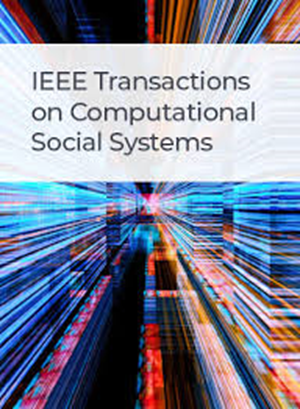对比表征学习的em增强负抽样策略
IF 4.5
2区 计算机科学
Q1 COMPUTER SCIENCE, CYBERNETICS
IEEE Transactions on Computational Social Systems
Pub Date : 2024-10-04
DOI:10.1109/TCSS.2024.3454056
引用次数: 0
摘要
对比学习(CL)作为自监督学习(SSL)的一个代表性框架,在表征学习领域引起了广泛的关注。通过将“正面”示例和锚点结合在一起,并从锚点中剔除许多“负面”示例,CL能够为不同模态的数据生成高质量的表示。因此,选择的正反例的质量对基于cl的模型的性能至关重要。然而,由于假设标签不可用,大多数现有工作遵循对比实例歧视范式,将每个输入实例视为一个单独的类别。因此,他们更加关注正例生成,并设计了大量的数据增强策略。对于负样本,他们只是利用批内负抽样策略。我们认为这种负采样策略很容易选择假阴性并抑制CL的能力,我们也认为这是CL需要大量阴性的原因之一。除了使用带注释的标签,我们还尝试以一种无监督的方式来解决这个问题。我们建议将期望最大化(EM)整合到负样本的选择中,并开发一种新的EM增强负样本策略(EMCRL)来区分假阴性和真阴性,以提高CL性能。具体而言,EMCRL利用EM估计每个样本与相应批中阴性之间的真值关系分布,然后利用估计优化模型参数。考虑到EM算法对参数初始化的敏感性,我们提出在分布估计中加入随机翻转来增强学习过程的鲁棒性。在句子表示和图像表示任务的几个高级模型上进行的大量实验证明了EMCRL的有效性。我们的方法很容易实现,代码可以在https://github.com/zhangkunzk/EMCRL_pytorch上公开获得。本文章由计算机程序翻译,如有差异,请以英文原文为准。
EMCRL: EM-Enhanced Negative Sampling Strategy for Contrastive Representation Learning
As one representative framework of self-supervised learning (SSL), contrastive learning (CL) has drawn enormous attention in the representation learning area. By pulling together a “positive” example and an anchor, as well as pushing away many “negative” examples from the anchor, CL is able to generate high-quality representations for the data of different modalities. Therefore, the qualities of selected positive and negative examples are critical for the performance of CL-based models. However, due to the assumption of label unavailability, most existing work follows the paradigm of contrastive instance discrimination, which treats each input instance as an individual category. Therefore, they focused more on positive example generation and designed plenty of data augmentation strategies. For negative examples, they just leverage the in-batch negative sampling strategy. We argue that this negative sampling strategy will easily select false negatives and inhibit the capability of CL, which we also believe is one of the reasons why a large size of negatives is needed in CL. Apart from using annotated labels, we try to tackle this problem in an unsupervised manner. We propose to integrate expectation maximization (EM) into the selection of negative examples and develop a novel EM-enhanced negative sampling strategy (EMCRL) to distinguish false negatives from true ones for CL performance improvement. Specifically, EMCRL employs EM to estimate the distribution of ground-truth relations between each sample and corresponding in-batch negatives and then optimizes model parameters with the estimations. Considering the sensitivity of EM algorithm to the parameter initialization, we propose to add a random flip into the distribution estimation to enhance the robustness of the learning process. Extensive experiments over several advanced models on sentence representation and image representation tasks demonstrate the effectiveness of EMCRL. Our method is easy to implement, and the code is publicly available at https://github.com/zhangkunzk/EMCRL_pytorch .
求助全文
通过发布文献求助,成功后即可免费获取论文全文。
去求助
来源期刊

IEEE Transactions on Computational Social Systems
Social Sciences-Social Sciences (miscellaneous)
CiteScore
10.00
自引率
20.00%
发文量
316
期刊介绍:
IEEE Transactions on Computational Social Systems focuses on such topics as modeling, simulation, analysis and understanding of social systems from the quantitative and/or computational perspective. "Systems" include man-man, man-machine and machine-machine organizations and adversarial situations as well as social media structures and their dynamics. More specifically, the proposed transactions publishes articles on modeling the dynamics of social systems, methodologies for incorporating and representing socio-cultural and behavioral aspects in computational modeling, analysis of social system behavior and structure, and paradigms for social systems modeling and simulation. The journal also features articles on social network dynamics, social intelligence and cognition, social systems design and architectures, socio-cultural modeling and representation, and computational behavior modeling, and their applications.
 求助内容:
求助内容: 应助结果提醒方式:
应助结果提醒方式:


